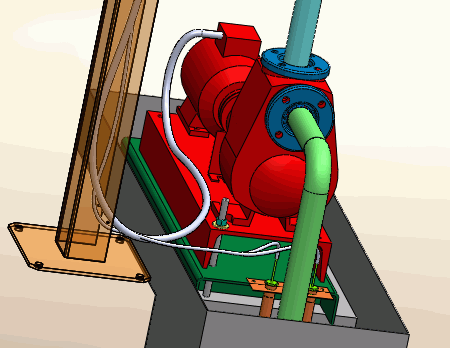Route Cables
Routing cables consists of generating a 3D representation of the cable
path within your electrical installation.
The routing is possible thanks to the routing
paths and connection points on the components.
Segregation manages
the rules applying to the paths of the cables.

|
SOLIDWORKS Electrical 3D
menu: Route Cables
Menu: Tools > SOLIDWORKS Electrical
> Route Cables |
When the command is launched, the left dockable panel changes to display
the options of the command.
Several of these parameters are saved in the SOLIDWORKS Electrical
file, they are specific to the file. The others are saved in the registry
and they are common to all SOLIDWORKS Electrical
files.
Routing Analysis
Show errors: This option, when
activated, displays a report at the end of the routing. This report shows
all routing errors. Click the Help
button on a line of the report to obtain information about the error.
Select route type
SOLIDWORKS
Route: Routes the cables as managed
by SOLIDWORKS,
taking into account cable diameter.
3D Sketch Route: Routes the
cables in the form of a 3D sketch. This mode is quicker and more preferable
if the routing is not permanent.
Update Origin/Destination: Check
this option to update the cable properties about its origin and destination.
Cable cores follow routing path:
By default, cable cores are directly routed. Select this option to use
paths to route them.
Select renderer type
Use splines: Ensures an optimal
rendering of the cable routing by using curves (splines). When you use
splines in the routing path, you can manually add points on it to improve
the routing.
Use lines: Generates cable routing
by using straight lines.
Add Tangency: When
this is selected, the checkbox allows curves to be automatically generated
at the end of the straight lines.
Cables to route
All cables: Launches routing
across all cables of the electrical project.
Selected components: Launches
the routing across a subsection of the components. Select the components
in the graphical area. Only the cables connected to this selection of
components will be routed.
Selected cables: When
you click Select cables...,
the cables selector dialog box opens allowing you to select the cables
you want to route. A harness cable cannot be selected. Only the selected
cables are routed, the other routed cables are not modified. A contextual
menu in the list allows you to manage the cables of the list.
Routing parameters
The first parameter allows you to enter the distance between two routing
paths.
The second parameter allows you to enter the distance between a connection
point and a routing path.
The third parameter lets you manage the distance between two cables.
The graph allows you to quickly view connections between components.
There are two buttons available: one for display, and the other for deletion.
